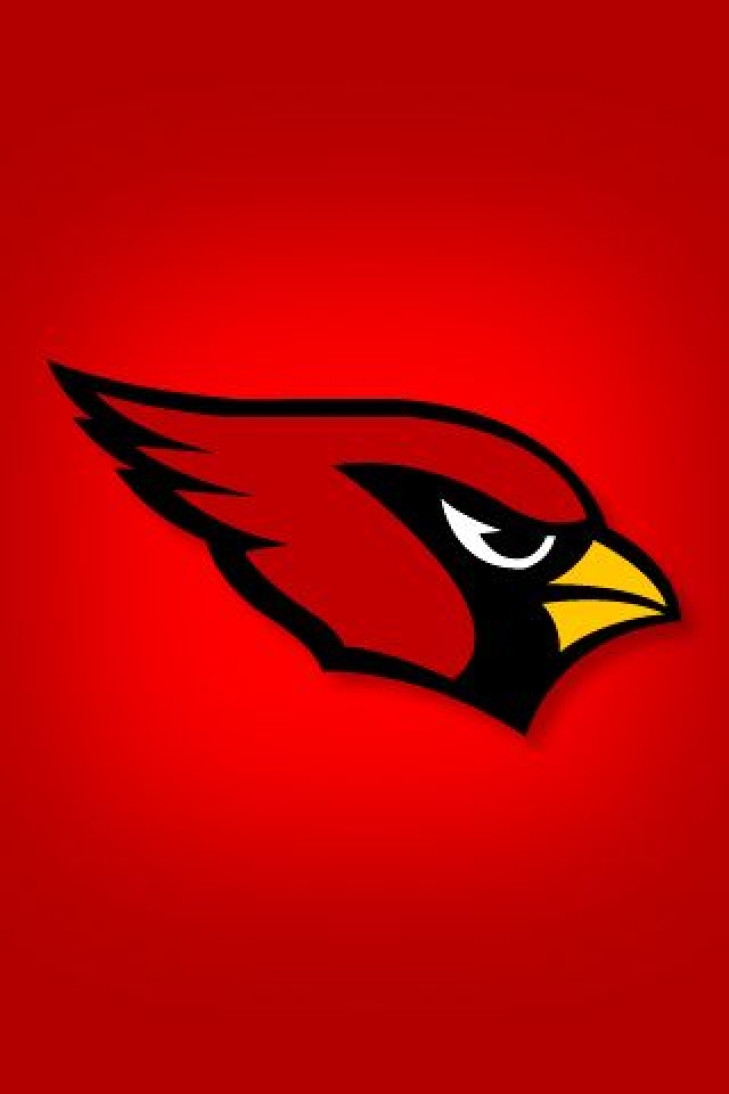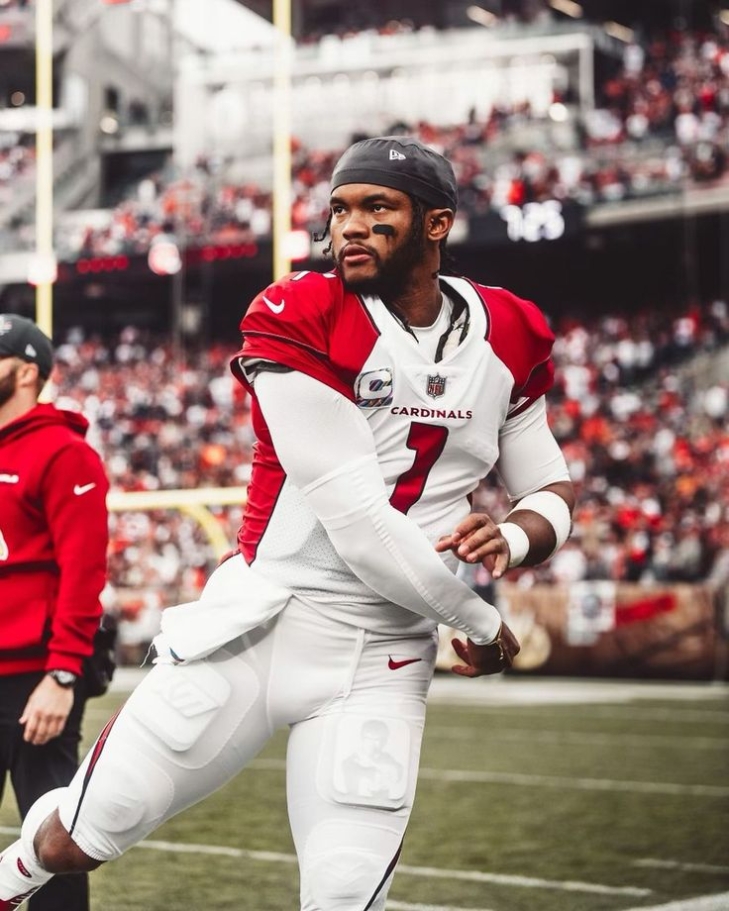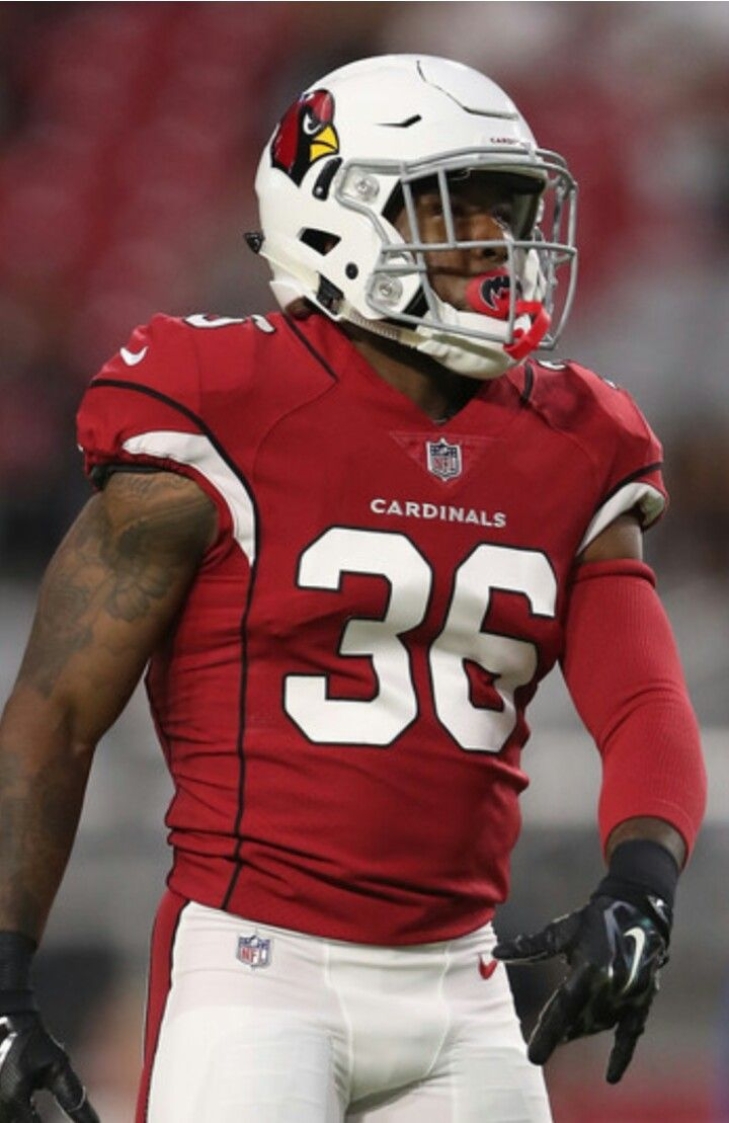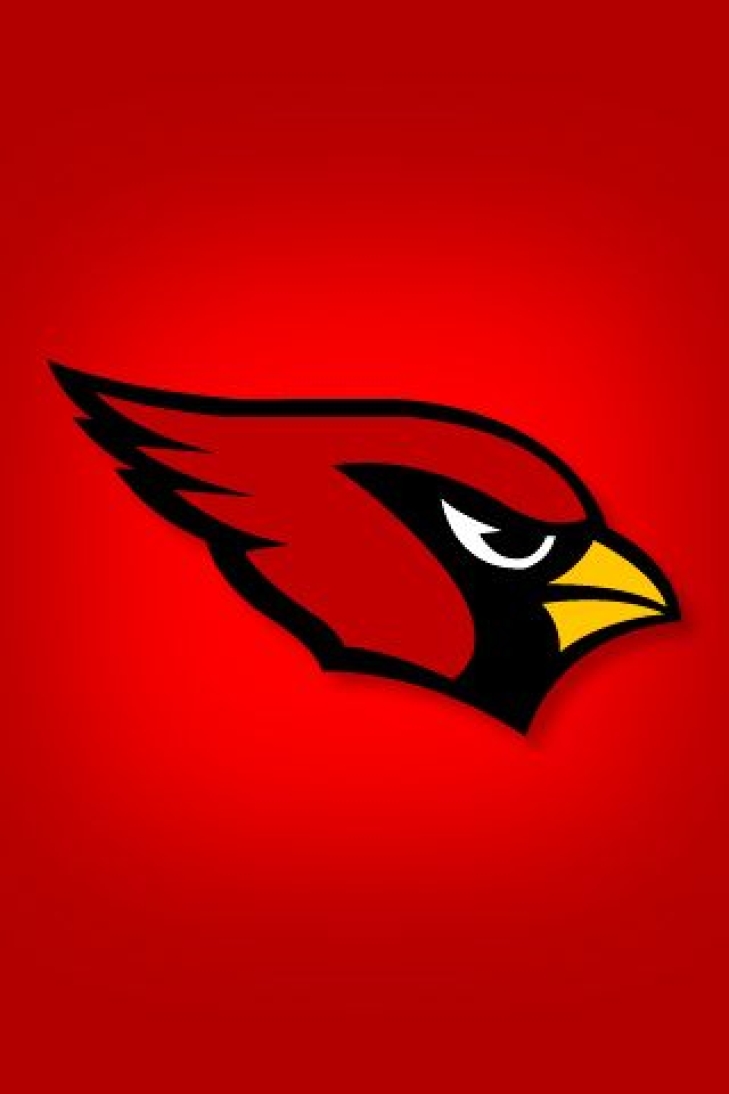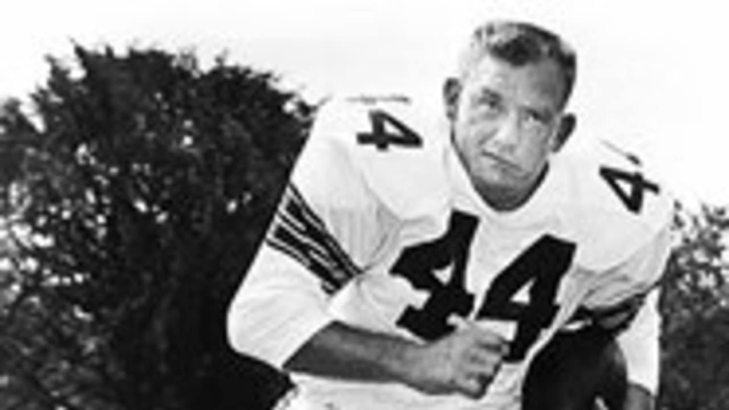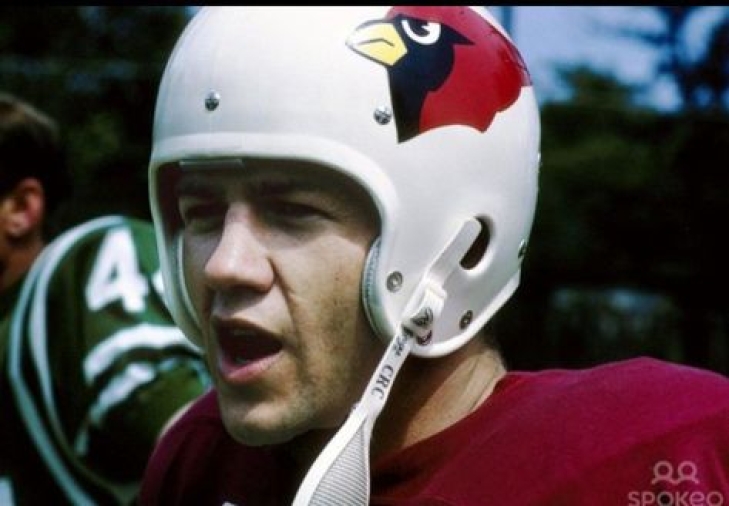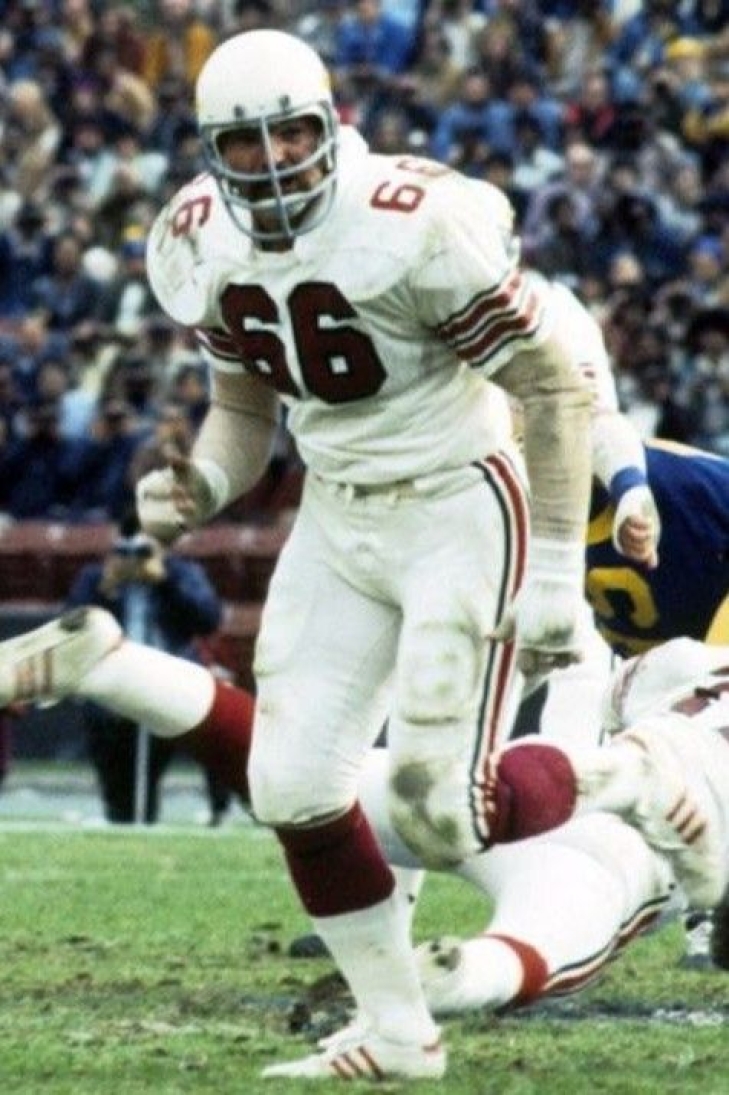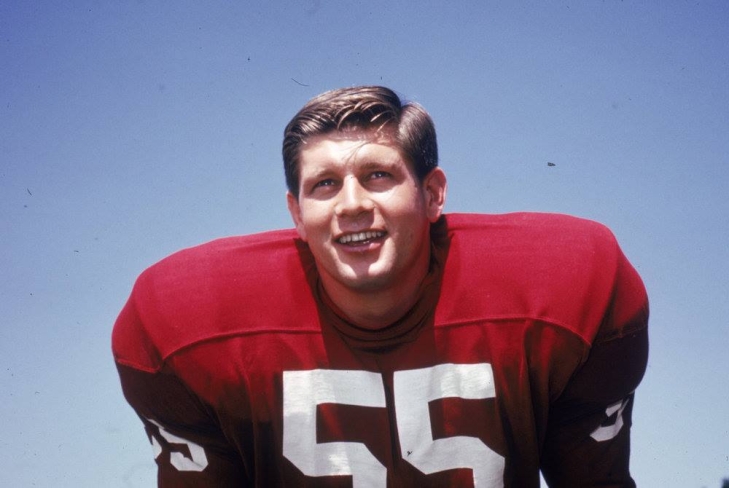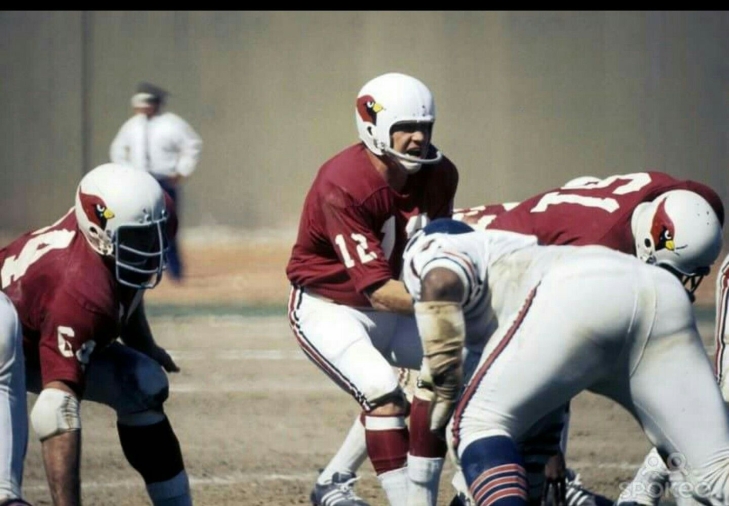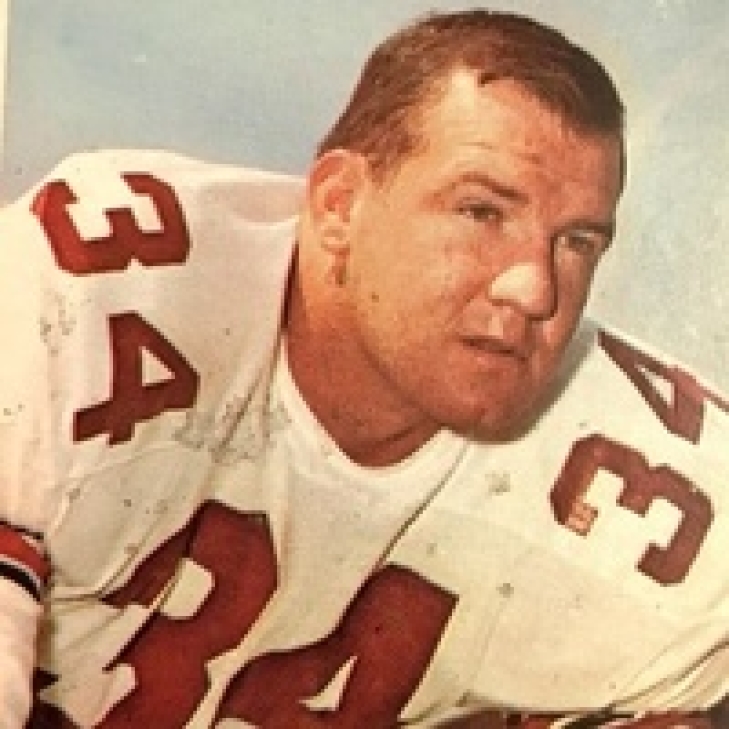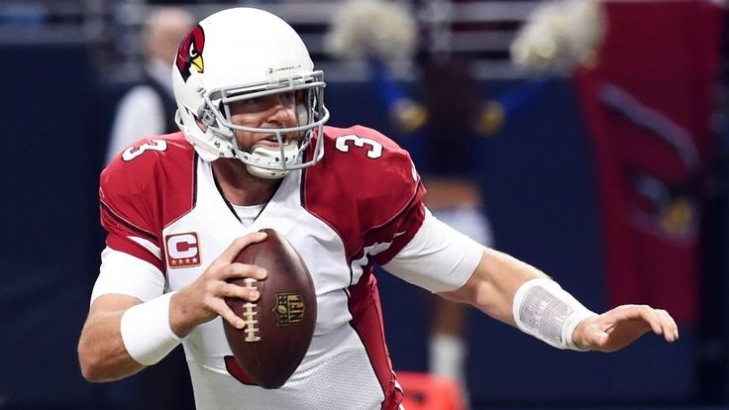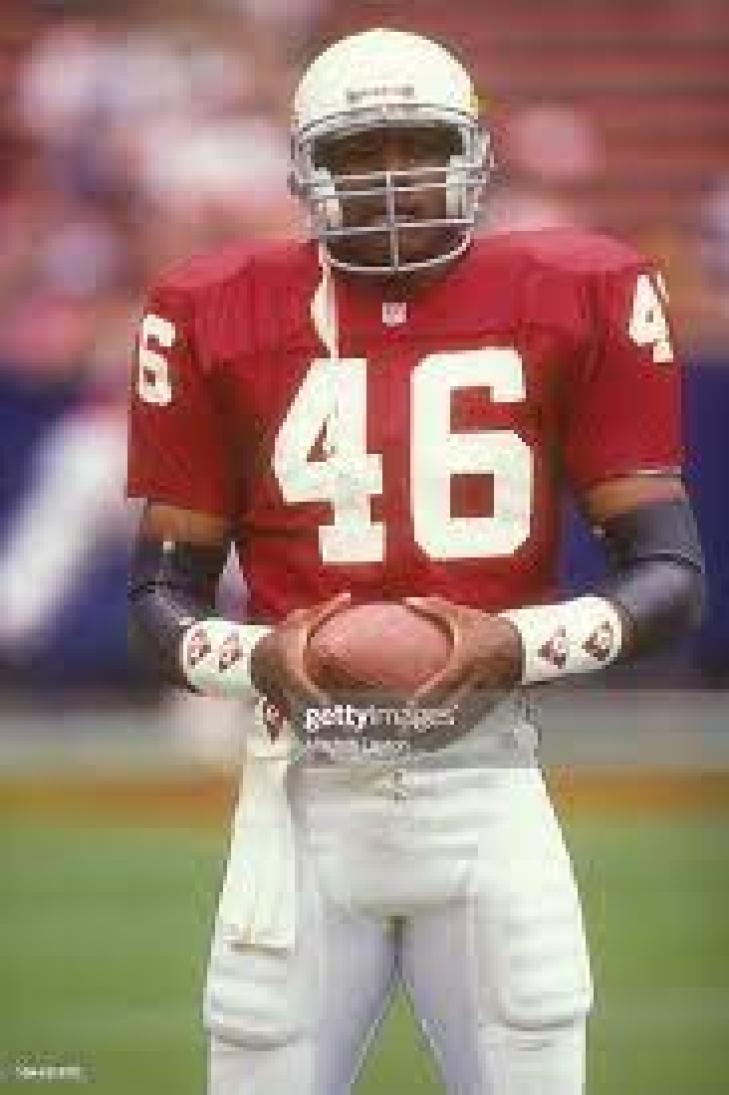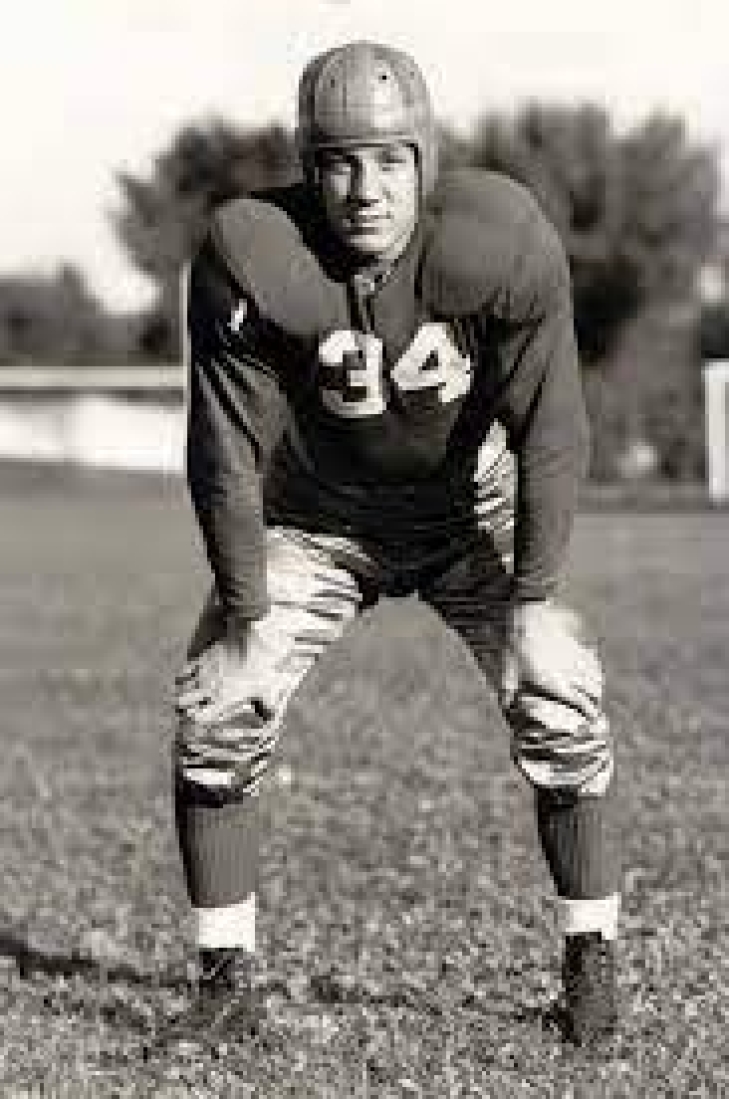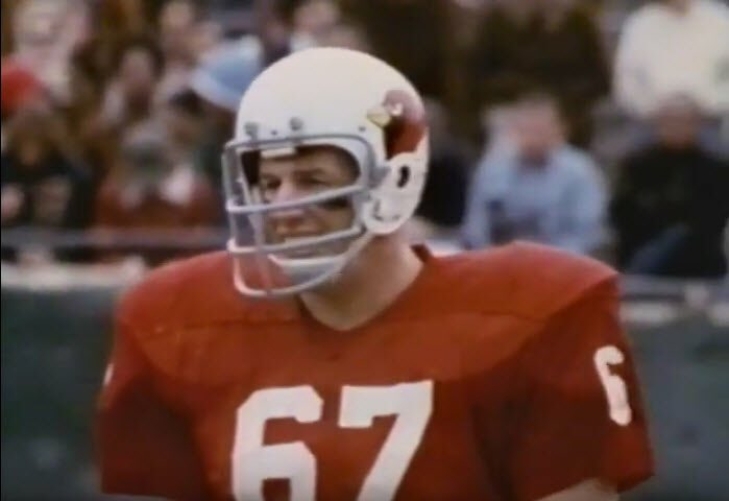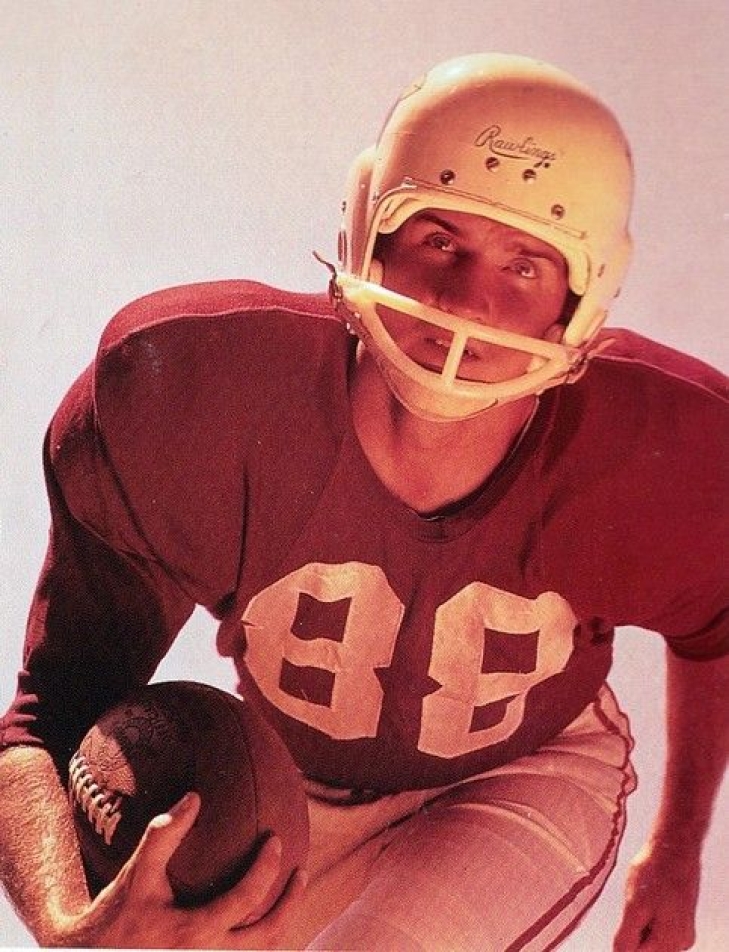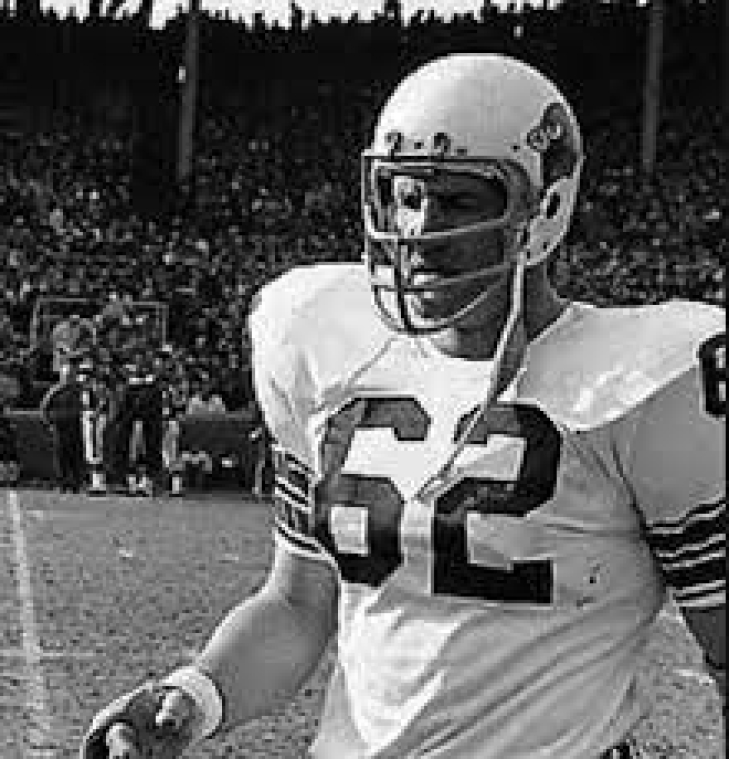Our All-Time Top 50 Arizona Cardinals have been revised to reflect the 2025 Season
Yes, we know that this is taking a while!
As many of you know, we at Notinhalloffame.com are slowly generating the top 50 of each major North American sports team. That being said, we maintain and update our existing Top 50 lists annually. As such, we are delighted to present our post-2024 revision of our top 50 Arizona Cardinals.
As for all of our top 50 players in baseball, we look at the following:
1. Advanced Statistics.
2. Traditional statistics and how they finished in the National Football League.
3. Playoff accomplishments.
4. Their overall impact on the team and other intangibles that are not reflected in a stat sheet.
Last year, the Cardinals finished 8-9 and missed the playoffs. As the franchise is one of the oldest in the league, there was little movement and only one new entrant.
As always, we present our top five, which remain unchanged.
1. Larry Wilson
4. Roger Wehrli
5. Dan Dierdorf
You can find the entire list here.
The only new entrant is two-time Pro Bowl Quarterback Kyler Murray. He debuts at #49.
We thank you for your continued support of our lists on Notinhalloffame.com.
49. Kyler Murray
There was no doubt who the Arizona Cardinals would take with the first overall pick in 2019; it was going to be Kyler Murray, the dynamic dual-threat Quarterback from Oklahoma who won the 2018 Heisman Trophy. As of this writing, the book on Murray has received mixed reviews, but it has yet to be finalized.
Murray started as expected, rushing for 544 Yards and throwing for 3,722 Yards with a 20-12 TD-INT ratio. He easily won the AP Offensive Player of the Year Award, and looked to be on pace to emerge as a top-five NFL pivot. The following two seasons showcased Murray’s elevation, earning Pro Bowls in 2020 & 2021 with increased yardage and pass efficiency. He led the Cards to their first playoff berth in six years, but Murray struggled in a one-and-done performance, setting the stage for the next two seasons, during which Kyler and Arizona struggled.
Murray struggled in 2022 and suffered a torn ACL injury late in the year. He returned halfway through the 2023 season but was still finding his legs. Last season, Murray was healthy and approached his Pro Bowl level output (3,851 PY, 21-11 TD-INT), and finds himself in 2025 in what could be a crossroads season.
17. Budda Baker
The NFL scouts projected Budda Baker as a Second Round pick in 2017, and that is where he landed, when the Arizona Cardinals chose him. The main reason that he fell out of the first round despite his dominance at the University of Washington was that he was south of 5’ 10”. It turned out to be a steal.
Baker was an All-Rookie Safety, and his combination of speed, instincts, and physical play propelled him to the upper echelon of Defensive Backs. A Pro Bowl as a rookie as a special-teams player, Baker enters 2025 on a six-year streak of Pro Bowls as a Safety, bringing a skill set of shut-down corner and sure-tackling that makes him one of the most avoidable DBs among Offensive Coordinators.
He could be a top ten Cardinal in the next two years if he maintains this pace.
Patrick Peterson Retires. Hall of Fame bound?
We have another significant retirement in the NFL, as it has been revealed that Defensive Back Patrick Peterson will be retiring on Monday.
A superstar at LSU, Peterson won the 2010 Chuck Bednarik Award, the Jim Thorpe Award, and the Jack Tatum Award, which vaulted him to the number five pick overall in the following draft. The Arizona Cardinals were the fortunate organization to land Peterson, who brought a sweet blend of size, speed, and football IQ, which made him one of the most versatile Defensive Backs of the 2010s.
Peterson wasted no time in establishing himself in the NFL. A starting Cornerback from day one, Peterson began his career with eight straight Pro Bowls, earning three First Team All-Pros along the way. The former LSU Tiger was so dominant in the 2010s that he was selected to the 2010s All-Decade Team. He finished his career with two years in Minnesota and one in Pittsburgh and compiled 36 Interceptions and 652 Combined Tackles.
Peterson last played in 2023, which makes him eligible for the Pro Football Hall of Fame in 2029, and in our pre-2024 Notinhalloffame Football monitor, he was ranked #13.
We here at notinhalloffame.com would wish Patrick Peterson the best in his post-playing career.
Our All-Time Top 50 Arizona Cardinals are now up
Yes, we know that this is taking a while!
As many of you know, we at Notinhalloffame.com are slowly generating the top 50 of each major North American sports team. We have another one ready, with our Top 50 Arizona Cardinals.
As for all of our top 50 players in football, we look at the following:
1. Advanced Statistics.
2. Traditional statistics and how they finished in the National Football League.
3. Playoff accomplishments.
4. Their overall impact on the team and other intangibles that are not reflected in a stat sheet.
The most tenured team in the National Football League, the Arizona Cardinals have taken a long road, traversed multiple cities, and seen more hard times than good.
Formed in 1898 as the Morgan Athletic Club, they would be renamed the Racine Normals for two years before becoming the Racing Cardinals. Twenty years later, they were charter members of the National Football League as the Chicago Cardinals.
In the Windy City, the franchise won two titles, the first in 1925, disputed by the Pottsville Maroons, but there was no NFL Championship Game back then. The second title is undisputed, as with their "Million Dollar Backfield," they won the Championship Game in 1947, the last title they have won.
Taking a backseat to the Bears in Chicago, the Cardinals relocated to St. Louis in 1961. They only made the playoffs thrice in St. Louis and relocated again in 1987, becoming the Phoenix Cardinals. That name would change again to the Arizona Cardinals, and with Kurt Warner as their Quarterback, they made it to their first Super Bowl in the 2008 Season. They did not win but appear to have a permanent home in the desert.
Here is the inaugural top five:
1. Larry Wilson
2. Larry Fitzgerald
3. Charley Trippi
4. Roger Wehrli
5. Dan DIerdo
You can find the entire list here.
We thank you for your continued support of our lists on Notinhalloffame.com.
45. John David Crow
John David Crow won the 1957 Heisman Trophy, becoming the first player from Texas A&M to win the accolade. The legendary Bear Bryant often referred to Crow as one of the best players he ever had, and that type of hype will propel a player to the number two pick of the Draft, which the Cardinals had and used on the Halfback. Crow was hurt for part of his 1958 rookie season but was able to showcase all his skills in his second year, winning Pro Bowl honors and producing 994 Yards From Scrimmage, though the stat line could never fully encapsulate Crow.
Crow could rush, catch, pass, block, and return, and he could fit in any team's scheme. His best season was his third (1961) and the Cardinal's first in St. Louis, where he rushed for a career-high 1,071 Yards and led the NFL in YFS with 1,533. A second Pro Bowl came to Crow, who was also named a Second Team All-Pro.
Crow could not capitalize on that extraordinary year, as his physical play led to multiple injuries. He only played eight Games in 1961 and was largely ineffective, though a healthier Crow landed his third Pro Bowl on a 17-touchdown Year in 1962. Crow was held to three Games in 1963 and only had 554 Rushing Yards in 1964, and he would leave for San Francisco the following season.
Crow had an even 50 Touchdowns with 5,450 Yards From Scrimmage with the Cardinals.
41. Pat Fischer
As good as Pat Fischer was at Nebraska, he stood at only 5' 9" and fell all the way to the 17th Round (232nd Overall) in the 1961 Draft. Fischer was barely expected to make the team, let alone win a starting job, but once he did, he would become one of the most seasoned Cornerbacks in NFL history.
Fischer saw more time as a Returner as a rookie, but by his third season, he was a full-time starter at Left Cornerback, pioneering the bump and run coverage and picking eight interceptions in 1963. Fischer had a career-best 10 Interceptions the season after, returning two for Touchdowns. The voters named him a First Team All-Pro, the first and only time that would happen in his career. Fischer would add a second Pro Bowl in 1965, but he was targeted far less after his explosive 1964 campaign, thus seeing his Interceptions drop.
Fischer signed with the Redskins after the 1967 Season and achieved far greater fame. Twenty-nine of his 57 Interceptions were as a Cardinal, though he is best remembered as a Redskin.
48. Conrad Dobler
There was a time when Sports Illustrated mattered, and in one of their weekly publications, they named Conrad Dobler "Pro Football's Dirtiest Player."
Dobler was more infamous than he was good, but that should not take away from his skills as an Offensive Guard. A Pro Bowler three years in a row from 1975 to 1977, the vicious Lineman was a Second Team All-Pro in 1977. The Cardinals were not great when Dobler played there, but his tenacity and anger were factored into their opponent's game plans.
50. Irv Goode
Irv Goode was a beast at the University of Kentucky, which led to his high selection by the St. Louis Cardinals, who nabbed him 12th Overall in 1961. Goode accomplished a rare feat as a rookie, earning Rookie of the Year votes (4th), and though St. Louis was not impressive in the 1960s, the versatile lineman (he played at Left Tackle, Left Guard, and Center) won Pro Bowl honors in both 1964 and 1967.
He would later win a Super Bowl in a reserve capacity with the Miami Dolphins at SB VIII.
47. Freddie Joe Nunn
A First Round Pick from Mississippi, Freddie Joe Nunn seemed to bounce from Defensive End to Linebacker depending on the need in his first nine years in the NFL as a Cardinal.
A really good player but never was named a Pro Bowler or All-Pro, Nunn was at his best as a pass rusher, as shown by his 14-Sack year in 1988, the first year of the Cards' relocation to the desert. Had Nunn received a more defined and consistent role with the Cardinals and not endured legal issues (he was arrested multiple times), his profile in Cardinal history would be more significant. It also did not help that the St. Louis/Phoenix were hardly world-beaters when he played there. After nine seasons, Nunn departed for the Colts, where he played three years to close out his career.
Following Nunn's departure, he had the franchise record 66.5 Sacks, a record that stood until it was broken by Chandler Jones in 2021.
46. Charley Johnson
The first man to win back-to-back Sun Bowl MVPs and have his number retired at New Mexico State, Charley Johnson was drafted late (10th Round) of the 1960 Draft, seeing limited action in his rookie year, but became the Cardinals starter in his second season.
Johnson may not have ever appeared in a playoff game, but in '63 and '64, he had nine wins each in 14-game Seasons and was one of the top QBs in the league. A Pro Bowl selection in 1963, Johnson led the NFL in Completions (223) and Passing Yards (3,045), though he also had 24 Interceptions against 21 Touchdown Passes that year.
Johnson remained St. Louis’s starting Quarterback until the emergence of Jim Hart in 1969, and he was traded to the Houston Oilers. Overall, with the Cardinals, Johnson compiled a TD-INT ratio of 108-110 and 14,928 Yards.
43. E.J. Junior
With the Fifth Overall Pick in the 1981 Draft, the St. Louis Cardinals selected E.J. Junior, who was the second Linebacker taken behind someone you may have heard of; Lawrence Taylor. Junior did not have Taylor’s career (who could?) but the Cardinals got a lot of good football from the eventual College Football Hall of Fame inductee.
Junior won the starting job during the season and, by the mid-80s, was one of the best interior Linebackers in the NFC. His best season was in 1984 when he was a First Team All-Pro and began a two-year run of Pro Bowls. From 183 to 1985, Junior had eight Interceptions and 19.0 Sacks, and though he tailed off afterward, he was still a solid NFL player.
He left the Cardinals behind in 1988, joining Miami as a Free Agent. The Cardinals were not significant in the 1980s, but this does not detract from Junior's work in St.Louis/Phoenix.
40. Bill Koman
Bill Koman arrived in Chicago after a trade from the Philadelphia Eagles, and it was as a Cardinal the Linebacker enjoyed his greatest success.
Koman’s first season was in 1959, and as the team relocated to St. Louis, Koman’s profile rose and became one of the team's top Linebackers. A Pro Bowler in 1962 and 1964, Koman was the team's most ferocious tackler and is arguably forgotten as he starred during the franchise's weak decade.
38. Terry Metcalf
Long Beach State does not produce many draft choices, let alone NFL Pro Bowlers, but Terry Metcalf would break those molds and become a brief star of the St. Louis Cardinals offense.
Metcalf joined the Cardinals as a Third Round Pick in 1973 and saw immediate action as a rusher and returner with just over 1,000 All-Purpose Yards. Metcalf would see more touches over the next four seasons, going to the Pro Bowl three times (1974, 1975 & 1977) and accumulating at least 1,000 Yards From Scrimmage years, along with establishing himself as one of the top returners in the NFL. In all of his Pro Bowl years, he broke 2,000 Yards in All-Purpose Yards, setting a then-record 2,462 APY in 1975, an astounding amount considering it was still a 14-game Season. Metcalf also received strong MVP consideration over this period, finishing second in 1974 and third in 1975.
In what could never be imagined today, Metcalf bolted for the Canadian Football League for the Toronto Argonauts, where he received the financial compensation he felt he deserved. With the Cardinals had 9,048 All-Purpose Yards, a significant number, but we also had to drop him a few spots as he was fumble-prone, twice having led the league in Fumbles.
42. Carson Palmer
In 2002, Carson Palmer was the best Quarterback in College Football, winning multiple awards and going number one overall in the Draft. Fast forward a decade later, and Palmer was on his third team (Arizona), and despite the two Pro Bowls, was considered a minor disappointment based on the initial hype. It was with the Cardinals that he eventually had the best season of his life.
Palmer threw for 4,274 Yards in 2013, finishing eighth in that stat, and became the first QB to throw for 4,000 Yards in a year for three different teams. A torn ACL took him out of half of 2014, but his 2015 was electric. Palmer was second in MVP voting to Carolina's Cam Newton and had career-highs in Passing Yards (4,671) and Touchdown Passes (35) while topping the league in Yards per Attempt (8.7), Yards per Completion (13.7) and QBR (76.4).
Palmer had another excellent year in 2016 (4,233 Passing Yards & 26 TDs) but a broken arm in Week 7 of 2017 ended his campaign, and eventually his career, as he retired in the off-season. With Arizona, Palmer had 16,782 Yards and 105 Touchdowns, and entered their Ring of Honor in 2019.
37. Tim McDonald
Tim McDonald was an All-American at USC, where he continued the tradition of excellent Safeties the Trojans produced. The St. Louis Cardinals used their Second Round Pick in 1987 to get him, and it was as a Cardinal where he spent the first half of his career.
McDonald only played three Games as a rookie, but as the team relocated to Phoenix, he earned the starting Strong Safety job, which he held for five years. Leading the NFL in Forced Fumbles (4) in 1988, McDonald went to his first Pro Bowl, accruing career-highs in Tackles (155) and Interceptions (7). Opponents knew to stay away from McDonald afterward, thus reducing his tackling metrics, but he still made two more Pro Bowls (1991 & 1992) while running the secondary.
McDonald signed with the San Francisco 49ers in 1993, where he won a Super Bowl and went to three more Pro Bowls. He had half of his 40 Interceptions with the Cards.
35. Pat Harder
The Second Overall Pick Pat Harder from Wisconsin in 1944, Pat Harder made his first appearance for the Chicago Cardinals in 1946, where he was part of their “Million Dollar Backfield” along with Paul Christman, Charley Trippi, and Marshall Goldberg.
Harder’s tenure with the Cardinals was brief but potent. Living up to the hype, he would help the Chicago Cardinals win the 1947 NFL Championship and went on a three-year streak of First Team All-Pro Selections.
Playing at Fullback and also acting as the Cardinal's Place Kicker, Harder would become the first player in NFL history to exceed 100 Points in three straight years (1947-49). Harder was named the MVP by UPI in 1948, and his overall accomplishments would earn him a membership to the 1940's All-Decade Team.
Harder was traded to the Detroit Lions in 1951 and would win another title there.
34. Larry Stallings
For 14 Seasons, you knew exactly who would be at Left Linebacker for the St. Louis Cardinals, and that man was Larry Stallings.
An 18th Rounder from Georgia Tech, Stallings proved to be a steal for the Cardinals, as save for his second and third year, he was healthy and dependable and recorded a lot of tackles for St. Louis. A Pro Bowl Selection in 1970, Stallings contended for other appearances to the annual all-star affair.
He retired after the 1976 Season, having played 181 Games for the Cards.
33. Sonny Randle
Sonny Randle was a “futures” Draft Pick, meaning that the Chicago Cardinals used their 19th Round Pick in 1958 to select Wide Receiver Sonny Randle, who was still slated to play one more season with Virginia. Randle would make the Cardinals as a rookie, but when the team relocated the next year to St. Louis, he was made a starter and would have the best season of his life.
In 1960, Randle led the NFL in Touchdowns (15) with 893 Receiving Yards. The former Cavalier earned his only First Team All-Pro and began a three-year run of Pro Bowls, punctuated with a career-high 1,158 Yards. Randle did not win a post-season accolade in 1963, though he was solid with 12 TDs and 1,014 Yards. He would gain a fourth Pro Bowl in 1965 (845 Yards and 9 TDs).
Randle left for San Francisco, and compiled 60 Touchdowns and 5,438 Yards with the Cardinals.
32. Dale Meinert
Dale Meinert was initially drafted into the NFL by the Baltimore Colts, but he never played there, instead playing for the Edmonton Eskimos of the Canadian Football League, where he won two Grey Cups. He would return to the United States in 1958, joining the Chicago Cardinals becoming a starting Guard. As the Cardinals relocated to St. Louis in 1960, he was relocated on the gridiron, switching to Middle Linebacker.
Meinert fit better on the defensive side, winning three Pro Bowls and the team MVP in 1961. As the Cardinals were not a league power in the 1960s, Meinert’s contributions are not as celebrated as they should be, but this man was the team's best interior lineman for years.


